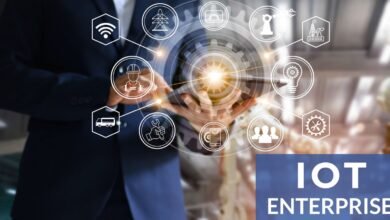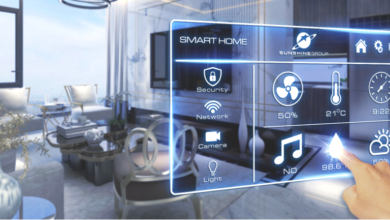IoT and Satellite Connectivity: Bridging the Gap in Remote Areas
In this article, we’ll dive deep into the relationship between IoT and satellite connectivity, and how they are playing a pivotal role in solving real-world challenges faced by remote communities.

In today’s interconnected world, technology is continuously evolving to meet the demands of various industries. One of the most innovative combinations that have gained significant attention in recent years is IoT and satellite connectivity. This powerful duo is bridging the connectivity gap in remote and underserved areas, revolutionizing industries such as agriculture, healthcare, disaster management, and environmental monitoring. By leveraging IoT technology and satellite networks, we can extend the reach of critical services and data transfer to the farthest corners of the world.
In this article, we’ll dive deep into the relationship between IoT and satellite connectivity, and how they are playing a pivotal role in solving real-world challenges faced by remote communities.
What is IoT (Internet of Things)?
The Internet of Things (IoT) refers to the network of physical devices that are embedded with sensors, software, and other technologies that allow them to connect and exchange data over the internet. These devices can range from everyday objects like smart thermostats and wearable fitness trackers to more complex systems like autonomous vehicles and industrial machinery.
The main advantage of IoT is its ability to collect and exchange real-time data, enabling smarter decision-making and automation across various sectors. For instance, in agriculture, IoT sensors can monitor soil moisture and weather conditions, sending alerts to farmers to optimize irrigation or harvest schedules.
However, one of the major challenges of IoT technology is ensuring reliable connectivity, especially in remote or underserved areas where traditional communication networks are not available.
What is Satellite Connectivity?
Satellite connectivity refers to the ability to establish communication links through satellites orbiting the Earth. Unlike traditional ground-based communication systems, satellite networks offer global coverage, making them ideal for reaching remote, rural, or disaster-stricken areas where terrestrial infrastructure is scarce or nonexistent.
Satellites are particularly valuable for providing internet and communication services to areas that would otherwise be disconnected from the digital world. They can support various services, including internet access, voice communication, and IoT connectivity, ensuring that users in remote areas have access to crucial services such as healthcare, education, and business opportunities.
In the context of IoT, satellite networks enable real-time data transmission from remote sensors and devices, even in the most challenging environments.
How IoT and Satellite Connectivity Work Together
The integration of IoT and satellite connectivity creates a seamless communication ecosystem that empowers remote areas with smart solutions. IoT devices in remote locations collect data from the environment, which is then transmitted via satellite links to central servers or cloud platforms for analysis. This data can be used for various purposes, such as predictive maintenance, resource optimization, and disaster monitoring.
Here’s a breakdown of how IoT and satellite connectivity work together in remote areas:
-
Data Collection by IoT Devices: IoT devices, such as sensors and actuators, are deployed in remote locations to collect valuable data. These devices monitor everything from temperature and humidity to soil quality and atmospheric pressure.
-
Data Transmission via Satellites: Once the data is collected by IoT devices, it is transmitted through satellite networks. Depending on the region, satellite systems like Low Earth Orbit (LEO) or Geostationary Orbit (GEO) satellites can be used to relay this data to ground stations.
-
Data Analysis and Decision-Making: After the data reaches the ground station or cloud platform, advanced analytics and machine learning models are used to process the information. This enables organizations to make data-driven decisions, such as adjusting irrigation schedules in agriculture, predicting weather patterns, or responding to environmental hazards.
-
Action and Response: Based on the insights gathered from the data, action can be taken. For example, IoT systems can trigger automated responses, such as opening irrigation valves or sending emergency alerts during natural disasters. Satellite connectivity ensures that these actions can take place regardless of the location.
Advantages of IoT and Satellite Connectivity in Remote Areas
The combination of IoT and satellite connectivity offers numerous benefits, especially in regions where traditional infrastructure is inadequate. Below are some key advantages:
1. Global Coverage
One of the most significant benefits of satellite connectivity is its ability to provide global coverage. Unlike terrestrial networks that rely on ground-based towers and cables, satellite communication systems can reach even the most remote areas, ensuring that IoT devices in these regions remain connected. Whether it’s the middle of the ocean, a remote desert, or a mountain village, satellite connectivity can keep the flow of data going.
2. Cost-Effective Solutions
Building traditional communication infrastructure in remote areas is often prohibitively expensive. Satellite networks offer a more cost-effective alternative by eliminating the need for costly ground-based infrastructure. This makes it feasible to deploy IoT devices and monitor activities in far-flung locations at a fraction of the cost of traditional networks.
3. Real-Time Monitoring and Data Collection
In many industries, real-time data collection is critical. IoT and satellite connectivity enable constant monitoring of environmental conditions, equipment performance, and public safety. In agriculture, for example, real-time soil moisture data can help farmers optimize irrigation practices, leading to better crop yields and more efficient water use.
4. Enhanced Disaster Management and Response
In the event of natural disasters like earthquakes, floods, or wildfires, satellite networks become lifelines. They allow emergency response teams to communicate and share real-time data from the affected areas. IoT sensors can be used to monitor critical infrastructure, such as bridges and dams, providing early warning signs of potential failures. In this way, IoT and satellite connectivity play a crucial role in disaster preparedness and management.
5. Support for Remote Healthcare Services
Telemedicine and remote healthcare services are becoming increasingly important, especially in remote areas where medical facilities are scarce. By combining IoT sensors (such as wearable health monitors) with satellite connectivity, healthcare providers can remotely monitor patients’ vital signs and provide real-time consultations. This ensures that people in isolated regions receive the care they need without having to travel long distances to a healthcare facility.
6. Agricultural Advancements
Agriculture is one of the key industries benefiting from IoT and satellite connectivity. With the help of IoT sensors, farmers can monitor soil moisture, temperature, crop health, and weather patterns in real time. Satellite connectivity ensures that this data can be transmitted back to the farmer or an agricultural advisor, enabling better decision-making. Furthermore, satellite imagery allows for precise monitoring of crop health, helping to detect issues like pest infestations or water shortages before they become significant problems.
7. Environmental Monitoring and Conservation
Environmental conservation efforts often face challenges in remote locations. IoT devices can be used to monitor air quality, water levels, and wildlife populations, providing valuable insights into the health of ecosystems. Satellite connectivity allows for continuous transmission of this data to central hubs for analysis, facilitating timely intervention if necessary.
Use Cases of IoT and Satellite Connectivity in Remote Areas
There are several real-world applications of IoT and satellite connectivity in remote areas. Some notable examples include:
-
Smart Agriculture: In areas where traditional agricultural infrastructure is lacking, IoT sensors can track soil conditions, crop health, and climate factors. Satellite connectivity enables real-time data transmission to farmers, who can make informed decisions to optimize crop production.
-
Wildlife Tracking: Conservationists use IoT-enabled collars to track wildlife in remote forests and savannas. Satellite connectivity helps transmit the data to researchers, allowing them to monitor animal behavior and migration patterns.
-
Disaster Relief: During natural disasters, IoT devices can be deployed to monitor the structural integrity of buildings or detect flood levels. Satellite networks ensure that this data is transmitted to emergency services, helping them to respond swiftly.
-
Mining and Oil Exploration: IoT devices in mining and oil exploration sites can monitor equipment health, detect leaks, and optimize resource extraction. Satellite connectivity ensures that data is sent to central systems for analysis, reducing downtime and improving safety.
The Future of IoT and Satellite Connectivity
The integration of IoT and satellite connectivity is only going to grow in the coming years. As Low Earth Orbit (LEO) satellites continue to expand, the coverage and bandwidth of satellite networks will improve, enabling even faster and more reliable communication. With the advancement of 5G and satellite communication technologies, we can expect the IoT ecosystem in remote areas to become even more powerful, facilitating smarter solutions for a variety of industries.
Conclusion
In conclusion, IoT and satellite connectivity are bridging the gap in remote areas by providing reliable communication and data transfer solutions. By enabling real-time monitoring, enhancing decision-making, and improving service delivery in industries like agriculture, healthcare, disaster management, and environmental conservation, this combination is transforming the way we approach challenges in isolated regions. As satellite networks continue to evolve, the potential for IoT in remote areas will expand, bringing even more benefits to communities that need them the most.
By embracing IoT and satellite connectivity, we can create a more connected and resilient world, ensuring that no region, no matter how remote, is left behind.











